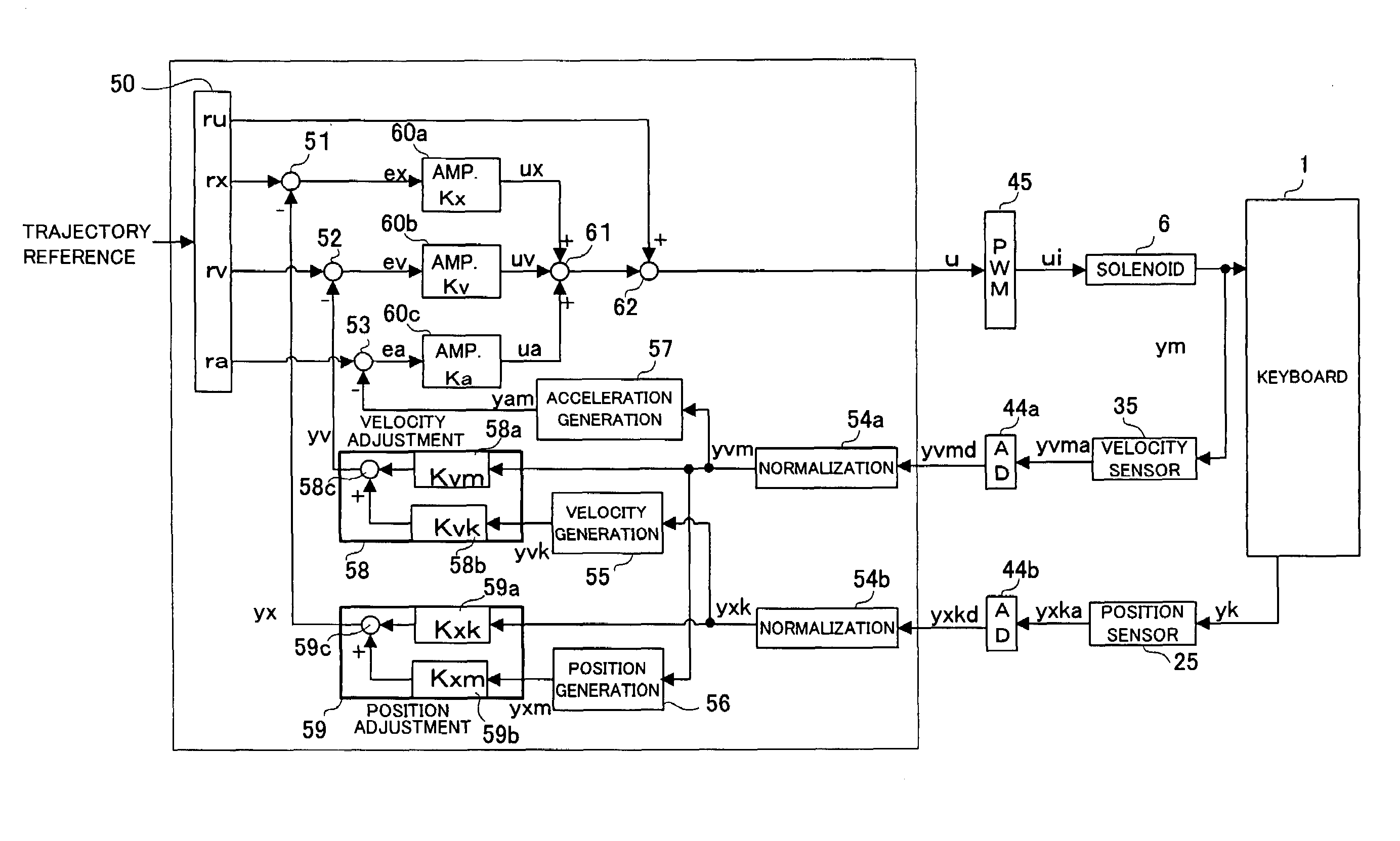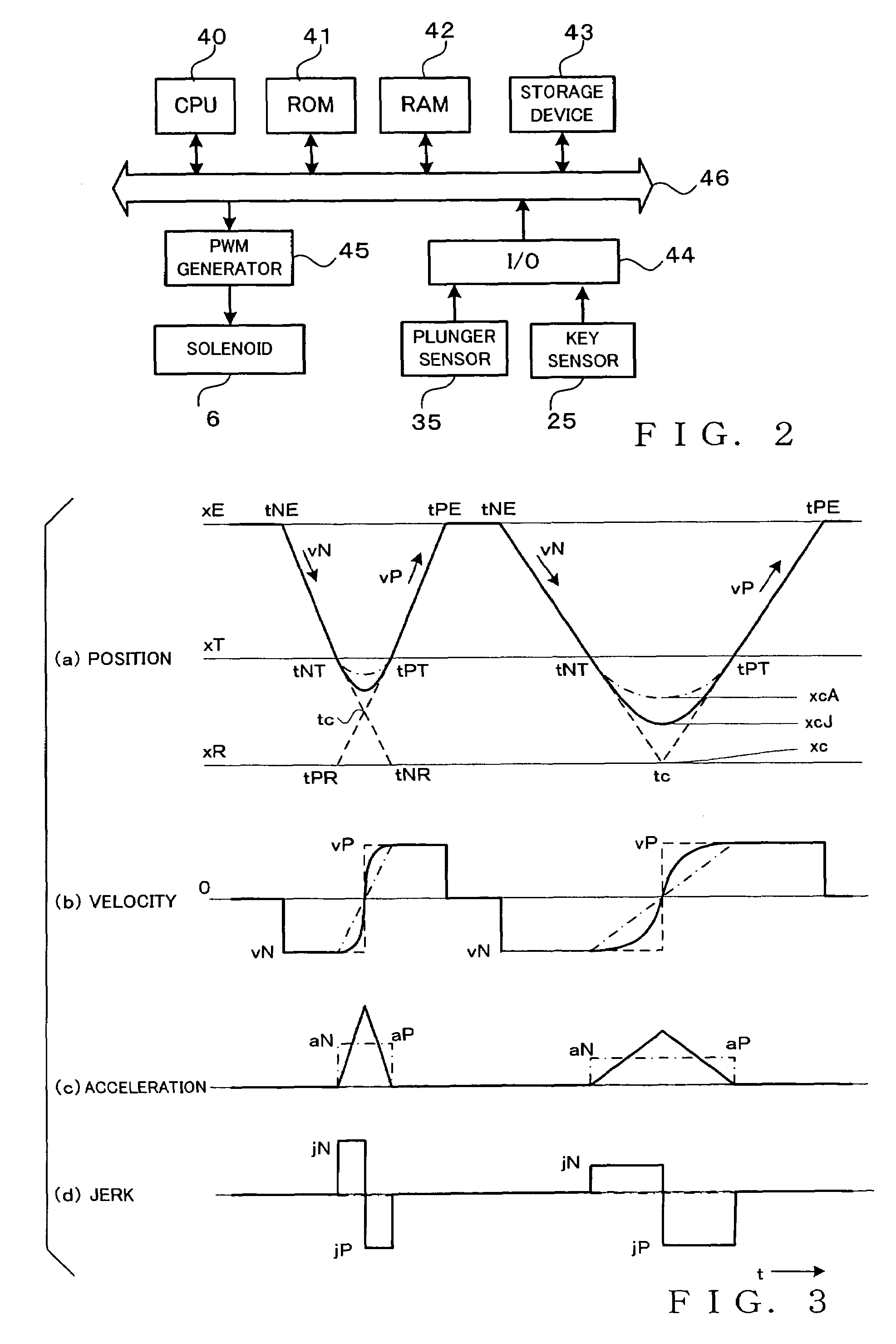Automatic piano, and method and program for automatically operating a key
a piano and automatic technology, applied in the field of automatic pianos, can solve the problems of unavoidable decrease of key stroke amplitude, easy out of control of keys, excessive increase of string striking intensity of hammers, etc., and achieve the effect of reproducing expressive performance nuances and tone colors, and increasing smoothness
- Summary
- Abstract
- Description
- Claims
- Application Information
AI Technical Summary
Benefits of technology
Problems solved by technology
Method used
Image
Examples
Embodiment Construction
[0017]FIG. 1 is a block diagram showing an example general structure of an automatic piano in accordance with an embodiment of the present invention, which particularly shows principal portions of a mechanical tone generation mechanism and functional blocks of an electric control system. As illustrated in FIG. 1, the automatic piano includes, as the mechanical tone generation mechanism, a plurality of (e.g., 88) keys 1, an action mechanism 2 for transmitting movement of the keys 1 to corresponding hammers 3 that strike corresponding strings 4 in response to the movement of the keys 1, and dampers 5 for damping vibration of the strings 4. On the underside of a rear end portion of each of the keys 1, there is provided an electromagnetic solenoid 6 as a key drive device for driving the key 1. The key 1 is supported for vertical pivotal movement substantially about its position that has a balance pin P extending therethrough to function as a supporting point. The key 1 when not depresse...
PUM
 Login to View More
Login to View More Abstract
Description
Claims
Application Information
 Login to View More
Login to View More - R&D
- Intellectual Property
- Life Sciences
- Materials
- Tech Scout
- Unparalleled Data Quality
- Higher Quality Content
- 60% Fewer Hallucinations
Browse by: Latest US Patents, China's latest patents, Technical Efficacy Thesaurus, Application Domain, Technology Topic, Popular Technical Reports.
© 2025 PatSnap. All rights reserved.Legal|Privacy policy|Modern Slavery Act Transparency Statement|Sitemap|About US| Contact US: help@patsnap.com



